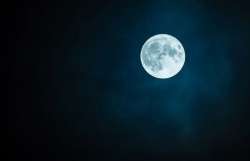How intense and dangerous is cosmic radiation on the Moon?
The Chang'e-4 lunar lander touched down on the far side of the Moon on 3 January 2019, with a German instrument for measuring space radiation on board. Since then, the Lunar Lander Neutron and Dosimetry (LND) instrument has been measuring temporally resolved cosmic radiation for the first time.

The Chang'e-4 lunar lander touched down on the far side of the Moon on 3 January 2019, with a German instrument for measuring space radiation on board. Since then, the Lunar Lander Neutron and Dosimetry (LND) instrument has been measuring temporally resolved cosmic radiation for the first time. Earlier devices could only record the entire 'mission dose.'
In its current issue, the scientific journal Science Advances reports on the work of the international group of scientists involved with the LND, including researchers from the German Aerospace Center (Deutsches Zentrum fuer Luft- und Raumfahrt; DLR). Their investigations have involved more precise radiation measurements on the Moon.
"Over the coming years and decades, various nations are planning to send crewed missions to explore the Moon. Space radiation poses a significant risk to the health of humans. The Apollo astronauts carried radiation measuring devices, referred to as dosimeters, on their bodies. But these only determined the radiation exposure over the course of the entire mission," says Oliver Angerer, LND Project Manager at the DLR Space Administration.
With the LND instrument, it is possible to measure the various characteristics of the radiation field over time intervals of 1, 10, or 60 minutes.
This enables researchers to calculate the 'equivalent dose,' which is important for estimating biological effects.
(With agency inputs)